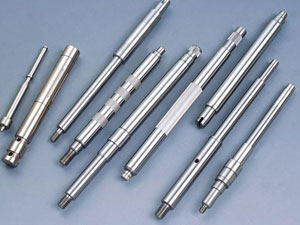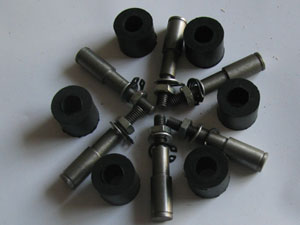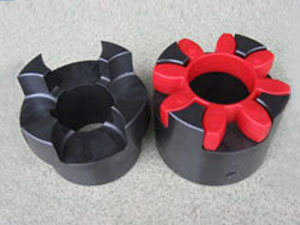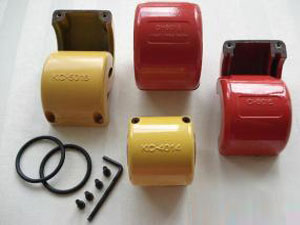
Shaft parts processing

Summary:Shaft parts are one of the typical parts often encountered in machines.It is mainly used to support transmission components, transmit torque and bear loads.
Customized processing of various shafts (high-precision spindles) lead screws, specific product specifications can be customized according to customer requirements, please contact us for details!
Processing of shaft parts:
XNUMX. The function, structural characteristics and technical requirements of shaft parts
Shaft parts are one of the typical parts often encountered in machines.It is mainly used to support transmission components, transmit torque and bear loads.Shaft parts are rotating parts whose length is greater than the diameter, and are generally composed of the outer cylindrical surface, conical surface, inner hole and thread of the concentric shaft and the corresponding end surface.According to different structural shapes, shaft parts can be divided into optical shafts, stepped shafts, hollow shafts and crankshafts.
Shafts with a length-to-diameter ratio of less than 5 are called short shafts, and those with a ratio greater than 20 are called slender shafts. Most shafts are in between.
The shaft is supported by a bearing, and the shaft section matched with the bearing is called the journal.Axle journals are the assembly benchmark of shafts. Their accuracy and surface quality are generally required to be high. Their technical requirements are generally formulated according to the main functions and working conditions of the shaft, usually the following items:
(XNUMX) Dimensional accuracy
In order to determine the position of the shaft, the bearing journal usually requires high dimensional accuracy (IT5~IT7).Generally, the dimensional accuracy of the shaft journal of assembling transmission parts is relatively low (IT6~IT9).
(XNUMX) Geometric shape accuracy
The geometric accuracy of shaft parts mainly refers to the roundness and cylindricity of journals, outer cones, Morse taper holes, etc. Generally, their tolerances should be limited within the dimensional tolerances.For the inner and outer round surfaces with higher precision requirements, the allowable deviation should be marked on the drawing.
(XNUMX) Mutual position accuracy
The position accuracy requirements of shaft parts are mainly determined by the position and function of the shaft in the machine.Generally, it is necessary to ensure the coaxiality requirements of the shaft journal of the assembly transmission part to the supporting shaft journal, otherwise it will affect the transmission accuracy of the transmission part (gear, etc.) and cause noise.For ordinary precision shafts, the radial runout of the matching shaft section to the supporting journal is generally 0.01~0.03mm, and high precision shafts (such as spindles) are usually 0.001~0.005mm.
(XNUMX) Surface roughness
Generally, the surface roughness of the shaft diameter matched with the transmission part is Ra2.5~0.63μm, and the surface roughness of the supporting shaft diameter matched with the bearing is Ra0.63~0.16μm.
XNUMX. The blanks and materials of shaft parts
(XNUMX) Rough parts of shaft parts
Shaft parts can be used in rough forms such as bars and forgings according to the use requirements, production types, equipment conditions and structure.For shafts with little difference in outer diameter, bar materials are generally used; for stepped shafts with large outer diameters or important shafts, forgings are often used, which saves materials and reduces the workload of machining. Improve mechanical properties.
According to different production scales, there are two types of blank forging methods: free forging and die forging.Free forging is mostly used for small and medium batch production, and die forging is used for mass production.
(XNUMX) Material of shaft parts
Shaft parts should choose different materials and adopt different heat treatment specifications (such as quenching and tempering, normalizing, quenching, etc.) according to different working conditions and usage requirements to obtain certain strength, toughness and wear resistance.
45 steel is a common material for shaft parts. It is cheap and after quenching and tempering (or normalizing), it can obtain better cutting performance, and it can obtain comprehensive mechanical properties such as higher strength and toughness. After quenching, the surface hardness can be Up to 45~52HRC.
Alloy structural steel such as 40Cr is suitable for shaft parts with medium precision and high speed. After quenching and tempering and quenching, this kind of steel has better comprehensive mechanical properties.
Bearing steel GCr15 and spring steel 65Mn, after quenching and tempering and surface high-frequency quenching, the surface hardness can reach 50~58HRC, and has high fatigue resistance and good wear resistance, which can be used to manufacture higher precision shafts.
The main shaft of the precision machine tool (such as the grinding wheel shaft of the grinder, the spindle of the jig boring machine) can choose 38CrMoAIA nitride steel.After quenching and tempering and surface nitriding, this steel can not only obtain high surface hardness, but also maintain a soft core, so it has good impact resistance and toughness.Compared with carburized and hardened steel, it has the characteristics of small heat treatment deformation and higher hardness.
relevant information
- Coupling flexibility and requirements for heat treatment
- When the diaphragm coupling is hot-assembled, the shaft hole needs to be excessively tightly coordinated
- The failure characteristics of slider coupling
- Plum blossom coupling adopts high-density cast steel material grade requirements
- Plum coupling small objects have big functions
- Error of axial disassembly of diaphragm coupling
- How to adjust and use the coupling
- The function and fixing method of elastic coupling
- The definition and structure of universal coupling
- How to solve the deviation of the plum blossom coupling
- Maintenance method of drum gear coupling
Shuoda Coupling Products
- Drum gear coupling
- Serpentine coupling
- Diaphragm coupling
- Plum coupling
- Elastic sleeve pin coupling
- Elastic pin gear coupling
- Elastic pin coupling
- Slider coupling
- Star flexible coupling
- Tyre coupling
- Roller chain coupling
- Rigid coupling
- Universal coupling
- Water pump coupling
- Coupling accessories
- Brake wheel brake
- Other




